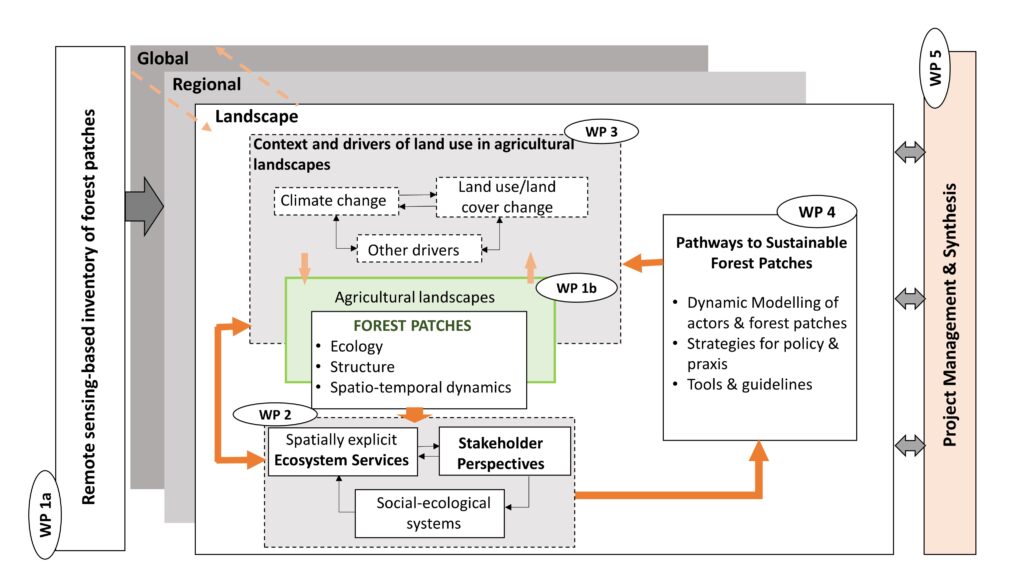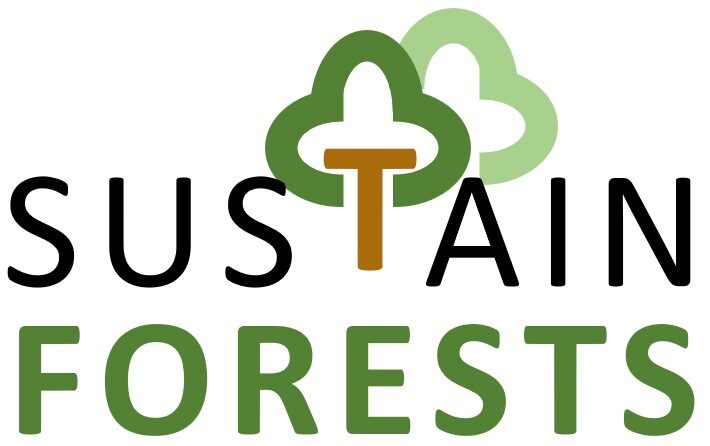Forest patches in predominantly agricultural landscapes are locally and globally important. They contribute to regulating ecological processes, are globally important carbon sinks, biodiversity reservoirs, and habitats, help regulate flooding and soil erosion, and provide food, timber, and much-needed non-timber forest products for local and other populations. However, they face degradation and conversion pressures, hence understanding why certain forest patches persist or regrow and how they can have a sustainable future will inform measures to maintain their functions and the social-ecological benefits they provide.
SUSTAINFORESTS aims to analyse the roles of forest patches in the agricultural landscapes of the Guineo-Congolian rainforest and Guinean forest zones of West Africa, a region facing rapid forest degradation and deforestation. It focuses on the Agou-, Koui- and Elavagnon forests in Togo, the Adaplame forest and the Lokoli Swamp forest in Benin Republic, the Iko Ekperem-Iko Esai-Owai forests and the Ikot Ataku-Okon swamp forest in Nigeria, and in Cameroon, on community forests in the Centre and South regions. SUSTAINFORESTS investigates the conditions under which various factors, including decision-making and land users’ behaviour, interact with and affect these forest patches, their sustainable use, management, and governance.
SUSTAINFORESTS is structured into 5 Work-Packages (WP) as shown in its conceptual framework below:

WP1: Spatially explicit inventory and characterisation of forest patches. WP1a has developed an inventory map of forest patches (1km2-10km2) in West Africa, and WP1b is conducting an in-depth spatiotemporal and ecological characterisation of selected forest patches.
WP2: Contributions of forest patches in agricultural landscapes to ecosystem services and human wellbeing. WP2 identifies the ecosystem services of selected forest patches, the values people place on them, and associated trade-offs, and how they inform the sustainable management of forest patches from multiple perspectives.
WP3: Understanding context and framing conditions determining land use in agricultural landscapes. Building on WP1 and WP2, WP3 identifies the key social–ecological components of the forest patches and their surrounding agricultural landscapes, and the key drivers affecting interactions and feedback in the system through participatory modelling and scenario analysis.
WP4: Pathways to sustainable forest patches in agricultural landscapes. WP4, drawing on WP1-WP3, examines how the forest patches in the agricultural landscapes can be sustainably managed using different modelling approaches.
WP5: Project management and synthesis. WP5 is concerned with issues such as data management, communication, and dissemination of SUSTAINFORESTS results.
References:
Ifejika Speranza C. 2020. Tropical forest patches under pressure: Dynamics, functions and sustainable management in agricultural landscapes of the West African forest and savannah zones. https://cordis.europa.eu/project/id/101001200
